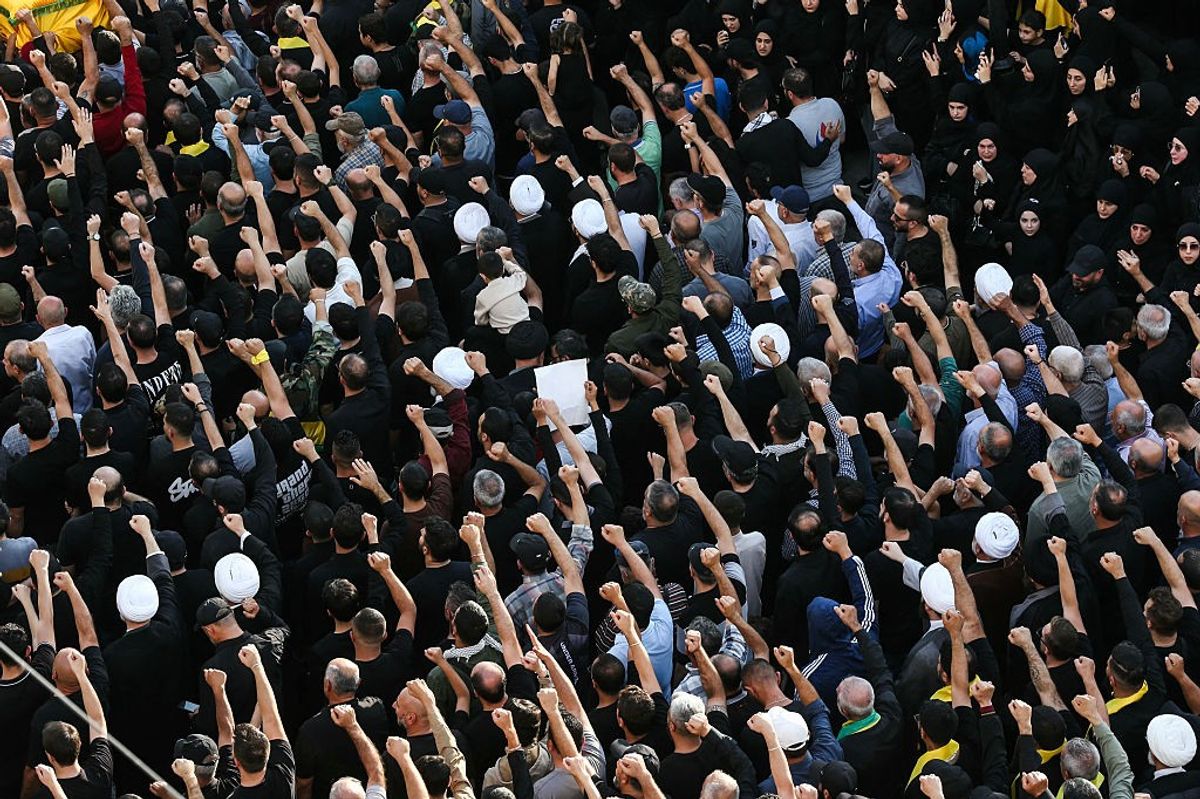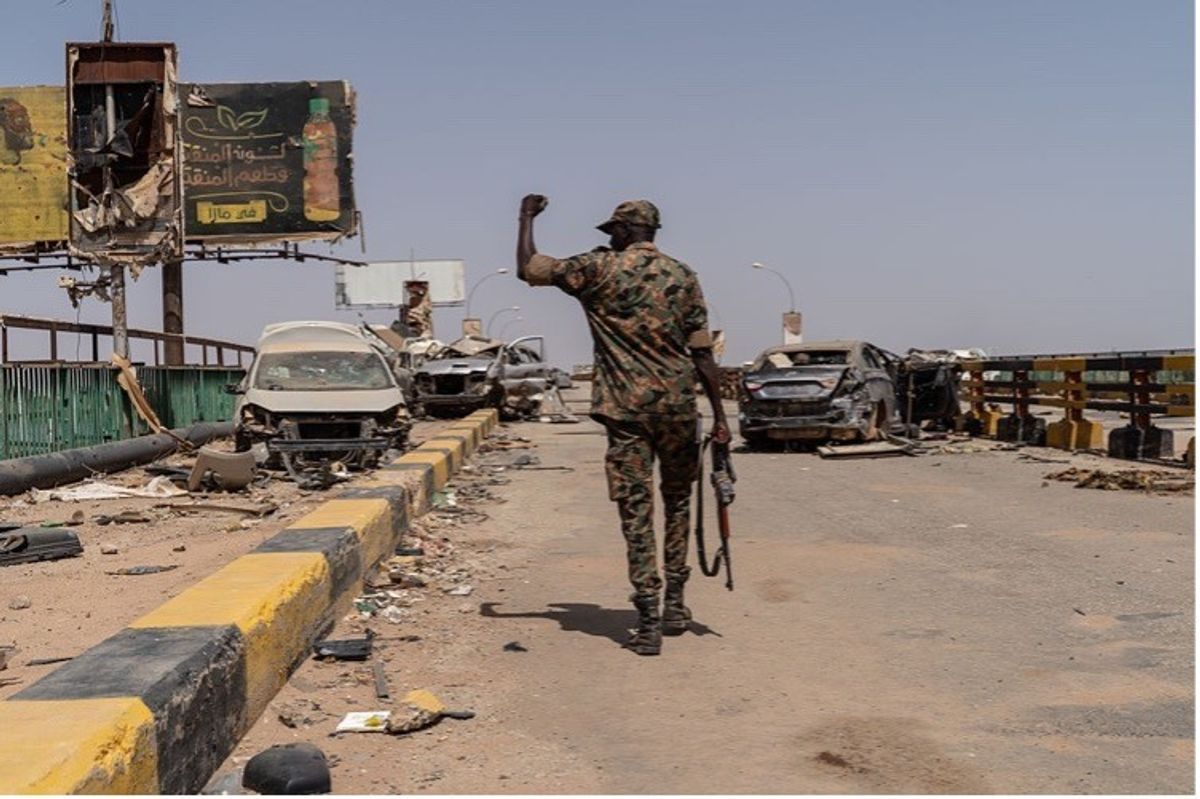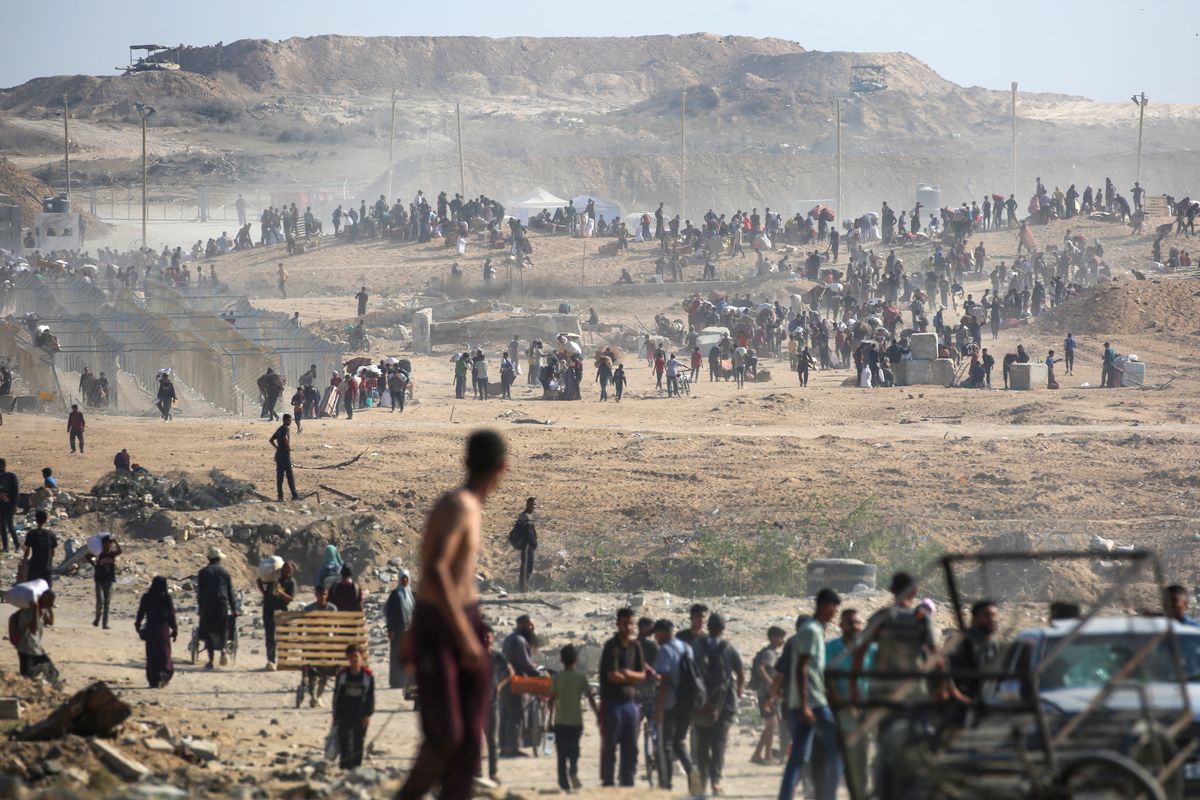DEEP DIVE — A small sliver of territory lies at the heart of the desperate international effort to free Hamas’ remaining hostages, and bring at least a temporary peace to Gaza.
The Philadelphi Corridor – nine miles long and just 100 yards wide – runs along Gaza’s southern border with Egypt, and is mentioned in nearly every briefing on the state of the ceasefire negotiations between Israel and Hamas. As the U.S., Egypt and Qatar work to draft a new – and some say last-chance – deal that will satisfy the warring parties, that small corridor keeps getting in the way.
“The real sticking point appears to be the question of the Israeli insistence that troops remain in the Philadelphi Corridor, to maintain security in Gaza and prevent the inflow of various war weapons, supplies and equipment into Gaza,” said Cipher Brief expert Gary Grappo, a former U.S. Ambassador to Oman.
“Hamas is obviously resisting that request,” Grappo said, “for the very reason that the Israelis want to set it up – and that is they rely on the tunnels underneath that corridor to resupply themselves with essential goods and weapons.”
Israel remains adamant that it must station troops in the corridor under any ceasefire arrangement; Hamas is demanding a full withdrawal of Israeli forces; and Egypt doesn’t want the Israelis there, either. All of which means that for now, while other hurdles remain, the negotiators are stalemated by that no-mans-land in Gaza, and who should control it if and when the guns go silent.
How Philadelphi came to be
The Gaza Strip is famously small, for a territory that has seen so much conflict over the years. At its southern end, Gaza’s border runs from the Mediterranean Sea to the Israeli border crossing at Kerem Shalom; that’s the nine-mile stretch covered by the Philadelphi Corridor, which includes the Rafah crossing into Egypt, a critical entry point for food, medicine and other aid.
The corridor’s history reaches back to the landmark 1979 Camp David accords between Israel and Egypt. That treaty – the first between Israel and an Arab nation – defined the Egypt-Gaza border at a time when there was still a regular Israeli presence in the Gaza Strip. After 1979, the Israeli army took control of the border area, which it gave the code name Philadelphi; Egypt refers to the area as Salah Al Din.
The nature of the frontier changed in 2004, when the Israeli parliament – the Knesset – approved a plan to withdraw all Israeli forces and citizens from the Gaza Strip. On September 1, 2005, Israel and Egypt signed what became known as the Philadelphi Accord, which authorized an Egyptian force of 750 soldiers to replace the Israelis along the corridor, with a mandate that included “the combating of terrorism and infiltration across the border.”
Many members of the Knesset objected to the 2005 agreement, arguing that if Israeli forces left the Philadelphi Corridor, munitions might be smuggled across the border to Palestinian militant groups in the Gaza Strip. But the agreement held, and the Israelis left.
All that changed last October, when Hamas launched its deadly terror and Israel responded with a ground invasion of Gaza. Last December, Netanyahu told the Knesset that Israeli forces would return to the Philadelphia corridor, imposing a new buffer zone at the Egyptian border. The IDF did so in May, taking control of the Rafah border crossing as well.
Everyone needs a good nightcap. Ours happens to come in the form of a M-F newsletter that provides the best way to unwind while staying up to speed on national security. (And this Nightcap promises no hangover or weight gain.) Sign up today.
The current dispute
U.S. officials have said that the current ceasefire proposal calls for a phased withdrawal of Israeli forces from Gaza. In the first phase – a six-week period – Israel is required to partially withdraw from the Philadelphi Corridor.
Phase one “includes the removal of Israeli Defense Forces from all densely populated areas…and that includes those areas along and adjacent to that corridor,” White House National Security Council spokesperson John Kirby told reporters on Tuesday. “That’s the proposal that Israel had agreed to.”
But U.S. officials have also said the words “Philadelphi Corridor” do not appear in the draft agreement, and in recent weeks Israel has insisted on keeping troops there indefinitely. The Israeli argument is simple: Hamas’ October 7 attacks made an Israeli military presence in the corridor essential again.
“Gaza must be demilitarized, and this can only happen if the Philadelphi Corridor remains under firm control,” Israeli Prime Minister Benjamin Netanyahu said this week, at a news conference during which he stood next to a large map of the Gaza Strip.
Calling the Philadelphi Corridor a Hamas "lifeline," the Israeli leader said the narrow strip was "central and determines our entire future."
Last week, Netanyahu held a cabinet vote on Israeli control of the corridor. The cabinet voted 8-1 to approve maps showing the Israeli military’s plans to keep its troops in the corridor. Interestingly, the minister most involved in security issues, Defense Minister Yoav Gallant, voted against the plan.
Hamas’s position is equally clear: A ceasefire and hostage-for-prisoners exchange must be accompanied by a full withdrawal of Israeli forces from Gaza – including the Philadelphi Corridor. Hamas has accused Netanyahu of sabotaging the peace talks by adding control of the Corridor to its ceasefire demands.
On Monday, Khalil al-Hayya, a senior Hamas official and the group’s lead negotiator, said the corridor had become the primary obstacle to a deal. “Without withdrawing from the Philadelphi Corridor, there will be no agreement,” Hayya told Al Jazeera.
The Egypt factor
If this were a straightforward Israel v. Hamas dispute, there might be a better chance of resolving it, given the presence of the U.S., Qatar and Egypt as interlocutors. But Egypt’s position on the Philadelphi Corridor makes a resolution that much harder.
For starters, Egypt has vigorously denied Israeli claims that it does not police the border effectively, and noted that it, too, has seen Hamas as a security threat. Egyptian officials have noted that over the past decade, under President Abdel Fatah El-Sisi, the country’s forces have destroyed more than 1,500 smuggling tunnels along the Gaza border and cleared the Egyptian side of the Rafah crossing to create its own three-mile-wide buffer zone.
Egyptian officials have also bristled at the suggestion that it would be any less tough or effective in the enforcement of anti-smuggling operations. Egypt has spent years cracking down on smuggling into Gaza, building barriers and destroying and flooding Hamas’ tunnels.
Finally, Egypt has said that an Israeli military presence along the border would violate longstanding “security agreements and protocols” – in particular the 2005 Philadelphi Accord.
Last week, Qatari media reported that Egypt had rejected the details of the map Netanyahu showed during his press conference, which showed the Philadelphi Corridor as a military zone. And on Thursday, Egypt’s army chief of staff Lt. Gen. Ahmed Fathy Khalifa made a surprise visit to the Gaza-Egypt border on Thursday, a visit widely seen as a sign of Egyptian displeasure with the Israeli plans.
The Cipher Brief Threat Conference is happening October 5-8 in Sea Island, GA. The world’s leading minds on national security from both the public and private sectors will be there. Will you? Apply for a seat at the table today.
Divisions within Israel
Netanyahu’s hard line on the corridor also faces opposition at home.
Families and friends of Israeli hostages have been among the loudest voices calling on Netanyahu to cut a deal. Their argument is less about the specifics of the Philadelphi Corridor, and more a view that Israel’s stance has made it less likely that the remaining hostages will come home safely. That argument reached a fever pitch last week, following the discovery of six murdered hostages in Gaza. News of their deaths was followed by a general strike in Israel, and some of the largest anti-government protests since the October 7 attacks.
Gil Dickmann, whose cousin Carmel Gat was one of the hostages found dead last week, issued a call on X for people to take to the streets to “stop the abandonment, bring the state to a halt, get a deal.”
More problematic for Netanyahu was the apparent dissent of the country’s top intelligence official. David Barnea, head of the Mossad intelligence agency, was reported to have told negotiators that Israel was willing to leave the Philadelphi Corridor. In a meeting with mediators in Doha, Barnea said that if an initial six-week truce held, Israel would “be willing to withdraw troops from there,” according to a diplomat briefed on the talks.
But Netanyahu wouldn’t budge, and some Israeli commentators have taken that as proof that the Prime Minister has no interest in any deal with Hamas.
"Netanyahu agreed long ago to the complete withdrawal of soldiers from the Philadelphi route," a senior official involved in the talks told the Haaretz newspaper. "The news conference convened by the prime minister was intended to tank the deal for political reasons. If these demands had not suddenly emerged, there would have been a deal a long time ago."
The hunt for a compromise
U.S. officials said repeatedly this week that they remained hopeful that a solution for the Philadelphi corridor issue could be found – and several ideas have been broached at the negotiations.
One involves the precise definition of “densely-populated areas” – which is the language in the draft deal for territory in Gaza which IDF forces must leave during the first phase of the agreement. Portions of the Philadelphi Corridor, officials said, might be deemed to not fall in that category.
Meanwhile, The Guardian reported that experts have suggested technological solutions to Israel’s security concerns, including surveillance and ground sensors that could effectively control efforts to rebuild Hamas’s smuggling tunnels.
Ambassador Grappo, a diplomat with experience in Middle East negotiations, said the timeline might offer avenues for compromise, as well as the prospect of a multinational force.
“One possibility is for an initial period of time, anywhere from three to six months, during which the Israelis might have the kind of control that they’re asking for now,” Grappo told The Cipher Brief. “And then the parties would revisit this issue…to see what kind of solution might be worked out – maybe another force performing that function, maybe an Arab force or maybe even some sort of multilateral force drawn from other countries who’d be willing to perform the task.”
Privately, however, U.S. officials appeared frustrated by the deadlock, and the Israeli position.
"The Philadelphi Corridor has become a political issue,” a senior administration official said Wednesday. “I saw some of the Israeli ministers claimed the deal endangers Israel's security. It's not true. Not taking the deal is a bigger danger for Israel's security than taking the deal, including when it comes to Philadelphi."
Cipher Brief Writer Ethan Masucol contributed to this report.
Read more expert-driven national security insights, perspective and analysis in The Cipher Brief.
It’s not just for the President anymore. Cipher Brief Subscriber+Members have access to their own Open Source Daily Brief, keeping you up to date on global events impacting national security. It pays to be a Subscriber+Member.
















